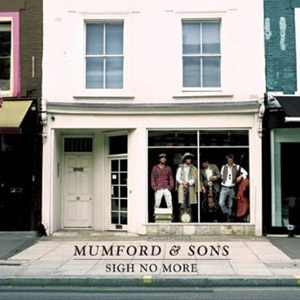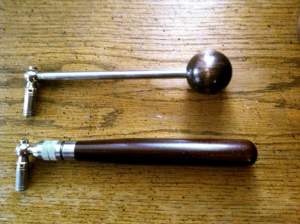
Author – Adam Perez is a doctoral student in liturgical studies at Duke Divinity School.
Christ is Risen!
He is Risen indeed, Alleluia!

This past holy week, I was reminded of a song from Mumford & Sons’ triple-Platinum,[1] break out album Sigh No More (Glassnote Records, 2009). This folk/rock/bluegrass-inspired album is packed with religious material (both explicit and implicit). For me, popular music is often a great site for reflecting on the distinctives of Christian faith because it has a way of touching on very human desires and widely held notions of religion and spirituality. I’m thinking especially of a song on the album called “Awake My Soul.” Here’s an excerpt of the pre-chorus and chorus:
“[…] In these bodies we will live, in these bodies we will die
And where you invest your love, you invest your life
Awake my soul [3x]
For you were made to meet your maker”
If you’ll pardon my somewhat literal (and possibly shallow) interpretation of these lyrics, you’ll see what I mean with the religious content and popular notions of religion and spirituality. The themes packed in to this little segment of the song include the life and death of the body, love and relationships, the duality of body and soul, and the nature and purpose of human life before God. There is much to commend to songwriters from this masterful lyricism, but maybe less to commend in the light of Easter where we celebrate Jesus’ life, death, and bodily resurrection. As the Apostle’s Creed summarizes, “I believe… in the resurrection of the body and the life everlasting.”
“In these bodies we will live / in these bodies we will die” and in these bodies we will be raised again to life everlasting. Christ is Risen!
But, for some reason, the resurrection of the body seems to be one of the hardest things for many Christians to believe in.[2] Maybe it’s a symptom of popular American Christianity’s penchant for concern over the condition of one’s soul and the “weakness of the flesh.” Admittedly, it is really hard to concretely imagine.
In both his incarnation (in Spanish: encarnación—literally, “enfleshment” or “inmeatedness”) and his bodily resurrection, Jesus affirms the significance of our bodies. I’m reminded of a passage from Luis Pedraja’s wonderful book on Christology, Jesus is My Uncle (Nashville: Abingdon, 1999) where he says,
“The Incarnation also makes it equally untenable to maintain that humanity can attain divinity on its own. It is only through God’s own initiative and action that this new reality can take place. But it takes place in human flesh… It also means that life in flesh and blood, our own incarnate reality, must be taken seriously as the place where we can encounter God… it affirms that our existence as flesh and blood is a part of God’s good creation—a part that is not alien to God.” (84)
What God affirms in the Incarnation, God fulfills in the bodily resurrection. If we thought human destiny was to ‘awake my soul,’ Jesus confronts us with his whole, embodied, new creation body. And, likewise, our bodies will be raised from the dead into the new heavens and new earth eschaton. This is a central hope of a truly Christian message at Easter and something truly worth singing about!
As the Apostle’s Creed summarizes, “I believe… in the resurrection of the body and the life everlasting.”
In particular, let’s sing more about the embodied encounters of the post-resurrection Jesus as a way of celebrating that Christian hope doesn’t look so much like the Mumford family’s dead body and ‘awakened soul.’ Rather, it is better expressed in song texts like “These Things Did Thomas Count as Real” (Thomas Troeger), “Aleluya Cristo Resucito” (Luis Bojos), or “The First Place” (Matthew Westerholm). Sing—and write new songs!—about Jesus the apparent gardener, Jesus the Emmaus road traveler, Jesus who still has nail holes in hands, and Jesus the seaside fish cook.
And while we’re at it, let’s give thanks for the bodies of those labored to make our holy week (and every week) services possible in and beyond music:

For all guitar techs, luthiers, organ tuners, electricians, and brass machinists who create and care for the instruments that allow make our music possible;
For the tired eyes, arms, lips, voices, and fingers of those who make music in praise of God and service to the Church;

For the gardeners and florists of our Easter Lilies and all the visual artists whose work enlivens our places of worship and turns our gaze toward God’s beauty;
For the farmers, growers, field workers, bakers, vintners, and cooks who offer us a foretaste of the Kingdom to come in the sharing of holy meals;

And for all the bodies that make up the Church—shaking, plucking, bowing, beating, pushing, pulling, resonating, and otherwise making music to remind us that the hope we celebrate at Easter will one day be resounding in the fullness of our own resurrected bodies.
“In these bodies we will live / in these bodies we will die” and in these bodies we will be raised again to life everlasting.
Amen, may it be so. Hallelujah!
[1] https://www.riaa.com/gold-platinum/?tab_active=default-award&se=sigh+no+more#search_section
[2] See also this short article on the issue from Albert Mohler, President of Southern Baptist Theological Seminary: https://albertmohler.com/2006/04/07/do-christians-still-believe-in-the-resurrection-of-the-body/
If you enjoyed reading this blog, check out our other blogs here!


